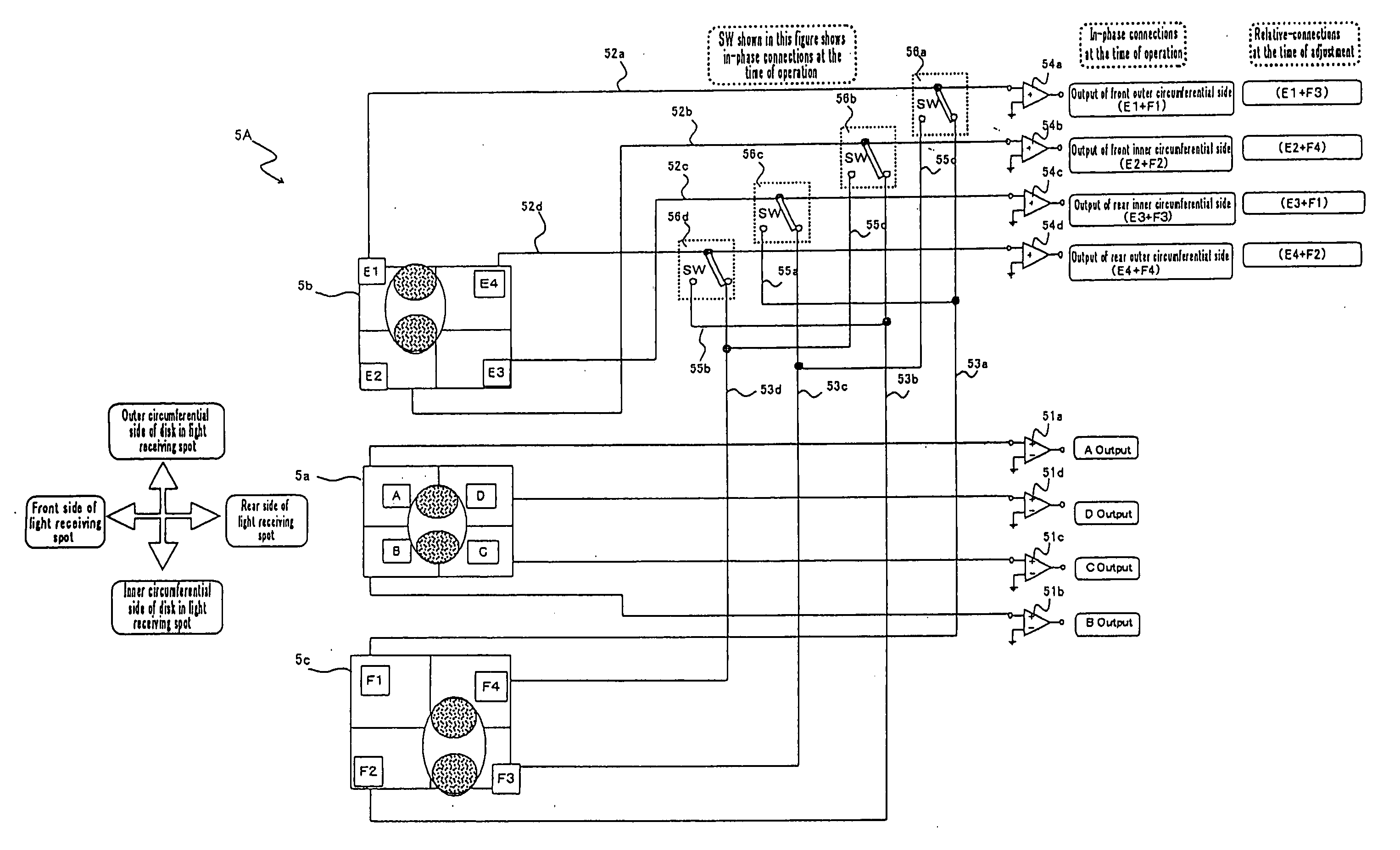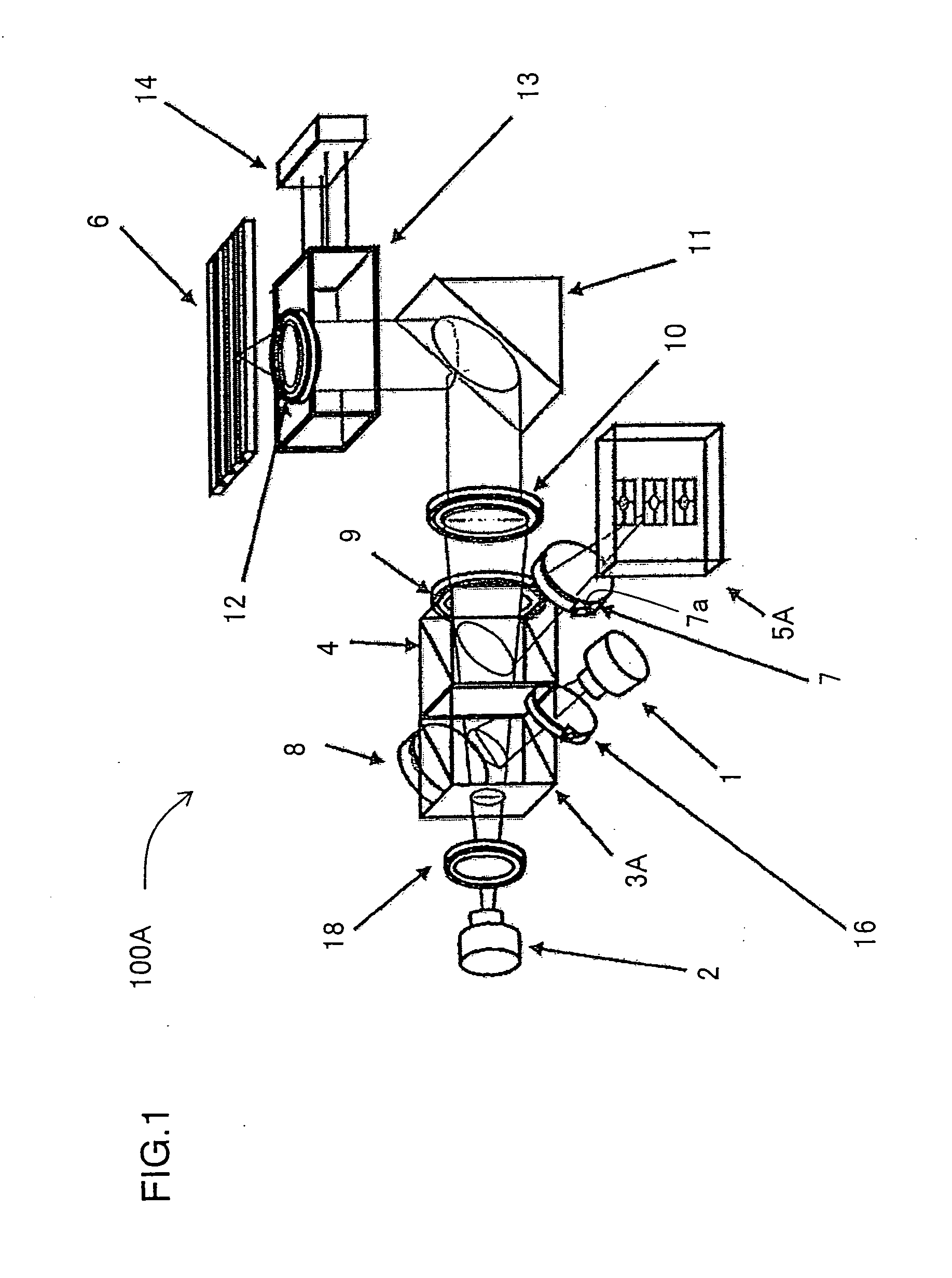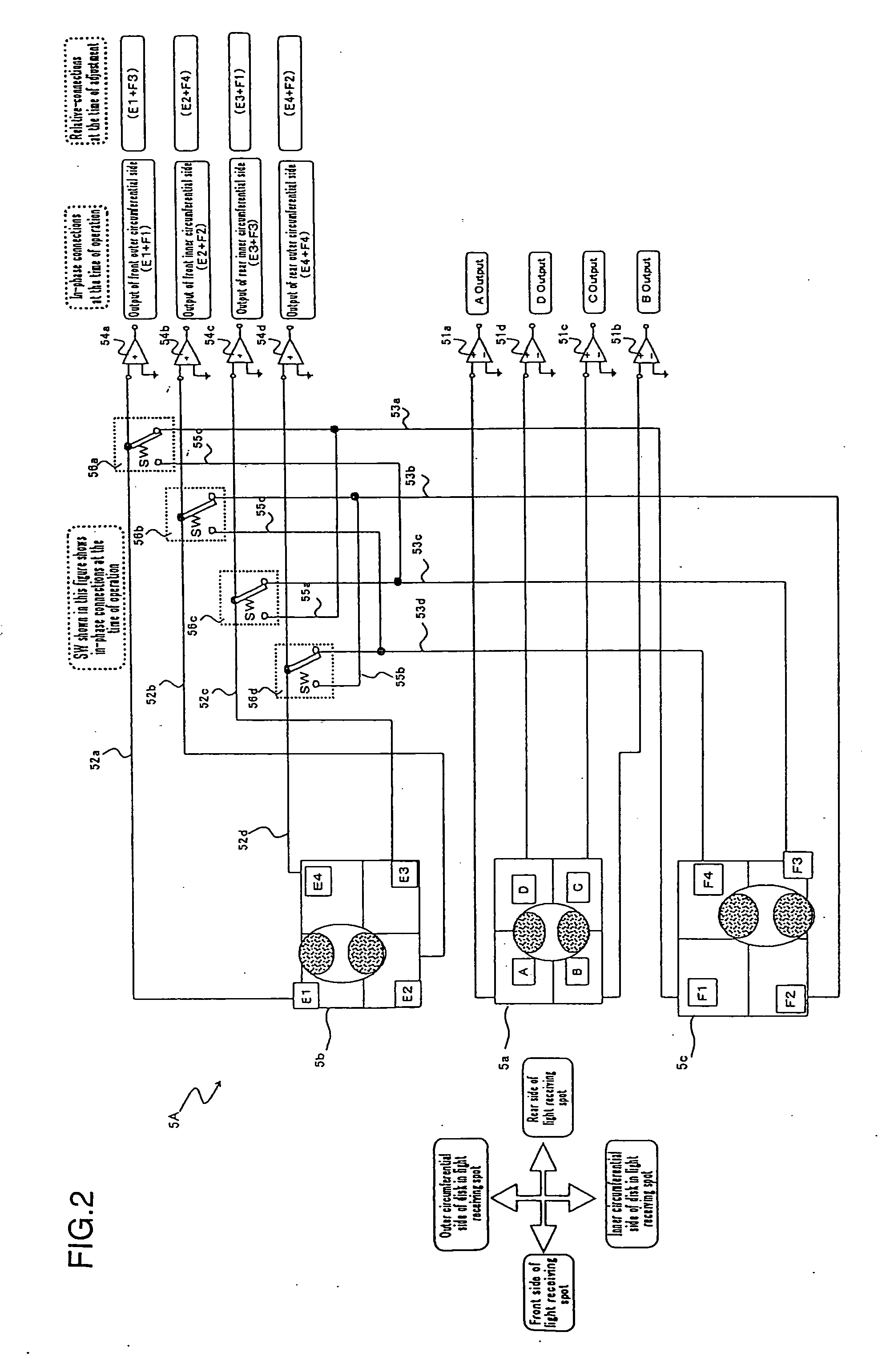Optical pickup device and information recording/reproducing apparatus
a technology of optical pickup and information recording, which is applied in the direction of optical recording heads, data recording, instruments, etc., can solve the problems of increasing assembly work man hours, and increasing the size and cost of optical pickup devices, so as to enhance the performance of optical pickup devices and reduce the number of output terminals. , the effect of accurate rotation adjustmen
- Summary
- Abstract
- Description
- Claims
- Application Information
AI Technical Summary
Benefits of technology
Problems solved by technology
Method used
Image
Examples
embodiment 1
[0116]FIG. 1 is a perspective view showing a structural example of important parts of an optical pickup device capable of handling two wavelengths according to Embodiment 1 of the present invention.
[0117] In FIG. 1, the optical pickup device 100A capable of handling two wavelengths includes a semiconductor laser element 1 for DVD which has a relatively short-wavelength, a semiconductor laser element 2 for CD which has a relatively long-wavelength, a cube-type first PBS 3A arranged farther from an optical disk 6, a cube-type second PBS 4 arranged closer from the optical disk 6 and a light receiving element 5A for receiving a reflection light reflected from the optical disk 6.
[0118] Laser lights from the semiconductor laser elements 1 and 2 are incident on the first PBS 3A, both of them as P polarized lights, from different directions from each other. The laser light from the semiconductor laser element 1 having a short-wavelength is reflected on the inclined plane (mirror plane) of...
embodiment 2
[0158]FIG. 6 is a perspective view showing a structural example of important parts of an optical pickup device capable of handling two wavelengths according to Embodiment 2 of the present invention.
[0159] In FIG. 6, the optical pickup device 100C capable of handling two wavelengths includes semiconductor laser elements 1 and 2 having different wavelengths from each other, a first PBS 3B arranged farther from an optical disk 6, a second PBS 4 arranged closer from the optical disk 6 and a light receiving element 5A for receiving a reflection light reflected from the optical disk 6. The second PBS 4 is a cube-type polarization beam splitter. As the first PBS 3B, either a cube-type polarization beam splitter or a flat-plate-type polarization beam splitter can be used. In Embodiment 2, the flat-plate-type polarization beam splitter is used as the first PBS 3B.
[0160] A laser light emitted from the semiconductor laser element 1 is incident on the second PBS 4 as an S polarized light and ...
PUM
| Property | Measurement | Unit |
|---|---|---|
| wavelengths | aaaaa | aaaaa |
| ¼ wavelength | aaaaa | aaaaa |
| in-phase positional relationship | aaaaa | aaaaa |
Abstract
Description
Claims
Application Information
 Login to View More
Login to View More - R&D
- Intellectual Property
- Life Sciences
- Materials
- Tech Scout
- Unparalleled Data Quality
- Higher Quality Content
- 60% Fewer Hallucinations
Browse by: Latest US Patents, China's latest patents, Technical Efficacy Thesaurus, Application Domain, Technology Topic, Popular Technical Reports.
© 2025 PatSnap. All rights reserved.Legal|Privacy policy|Modern Slavery Act Transparency Statement|Sitemap|About US| Contact US: help@patsnap.com



